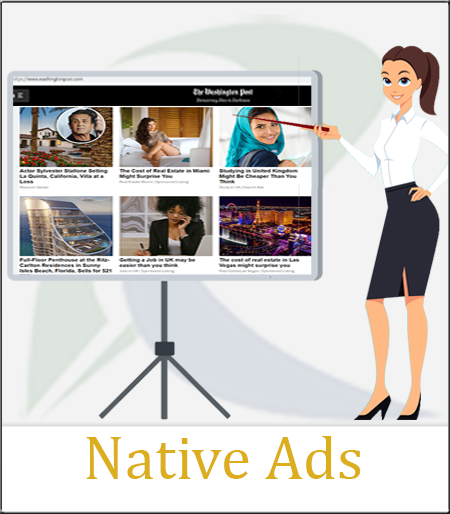Native advertisement is not a complex term to understand by its name, but a tricky mechanism. It is simply the ads related to culture, norms, appearance, and functionality – similar to the content available on that platform.
Native ads are placed on digital media feeds in a way they look like part of the editorial flow – unlike other banner ads or video ads. That’s how native ads are different and have some essential keys because they do not bother the readers and advertise content without sticking out like a sore thumb.

How To Distinguish Native Ads From Content?
The key feature of Native Ads is – these ads are non-disruptive. It is hard to spot a native ad in content. However, it was not favourable for advertisers since the audience clicked on content without being aware that it was an advertisement. This was in favour of Publishers. But in 2015, Federal Trade Commission (FTC) released Native Advertising: A Guide For Business.
FTC added that publishers must have tags that indicate the paid content, like an advertisement, sponsored, paid promotion etc.
Principles Of Paid Content:
Followings are the principles of Native Ads placement.
Knowledge-Based:
Content should be knowledge-based rather than product-focused not to break readers’ flow.
In-Stream Ads:
Native Ads will always be In-stream ads – since they are non-disruptive.
Facts About Native Advertisement:
We can’t certainly talk about its success or failure, but we instead will prefer to let you know the facts:
- Most consumers don’t even know about native advertisements.
- 51% of the consumers who know about these ads do not trust their transparency.
- 90% of publishers promote their content via native ads.
- 41% of brands are using native ads.
Why Are Native Ads Becoming Marketer’s Choice?
Users view native ads 53% more than that display ads. This ratio ultimately increases sales from 20% to 30%.
Native Ads do not bother viewers, so that the message can be conveyed to the right audience without any fatigue.
Due to knowledge-based campaigns, native ads grab more attention from users because of a sense of security. That user feels while they go through the ads.
According to recent research at Stanford University, native ads can fool no one. So it leads to genuine impressions, ultimately benefiting advertisers and publishers.
How Does It Impact Programmatic Ads?
Being part of programmatic Ads – Native Ads have significantly targeted the real consumer in real time. Although it has taken big data like headlines, thumbnail images, content URLs, description text, and many more, the efforts were worth it.
Using programmatic native advertising, a user visits a website, making space for an ad impression. The SSP sends bid demands to the publishers. The DSP reacts with metadata measurements and bids for the advertiser’s benefit.
In view of the metadata, the SSP chooses the triumphant bid and, in a flash, arranges the native ad through configuration to find a way into the website or app. This whole interaction happens in a negligible part of a second.
With the programmatic platform, native advertising can progressively accomplish an undeniably more focused reaction for every client, which means expanded commitment and bigger changes.
